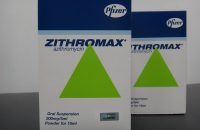An Overview of Minocin – Uses, Effectiveness, Combination Therapies, Patient Support, Over-the-Counter Options, Alcohol Interaction, Availability, and Dosage
-
Minocin
as low as $1,91Active ingredient: Minocycline hydrochloride
Dosage: 100mg, 50mg
Minocin: An Overview of Uses and Effectiveness
Minocin is an antibiotic medication that falls under the tetracycline group of drugs. It is widely prescribed by healthcare professionals to treat various bacterial infections, including:
- Acne
- Respiratory tract infections
- Urinary tract infections
- Sexually transmitted diseases
The key mechanism of Minocin is its ability to inhibit the growth and spread of bacteria within the body, ultimately leading to the elimination of the infection and alleviation of symptoms.
Evaluating the Effectiveness of Minocin and Comparing with Other Antibiotics
Clinical trials conducted in 1971 have demonstrated the remarkable effectiveness of Minocin in treating various bacterial infections. These trials have shown that the drug effectively eliminates bacteria and provides relief from associated symptoms.
Moreover, comparative studies have been conducted to evaluate the effectiveness of Minocin in comparison to other antibiotics. Such studies play a crucial role in helping healthcare professionals determine the most suitable antibiotic for specific infections, ensuring optimal treatment outcomes.
“Clinical trials conducted in 1971 have shown the effectiveness of Minocin in treating various bacterial infections.”
Guidelines for Using Minocin in Combination with Other Therapies
In certain cases, healthcare professionals may prescribe a combination of Minocin with other medications or therapies to achieve a more comprehensive and targeted approach to treatment.
The purpose behind this combination therapy is to enhance the effectiveness of treatment by addressing different aspects of the infection or disease. Healthcare professionals provide specific guidelines regarding the appropriate dosages, timing, and duration of combination therapies for each individual case.
It’s important to note that these guidelines may vary depending on the particular infection or condition being treated, emphasizing the need for personalized medical advice.
Patient Assistance Programs and Support Services
For individuals with limited financial resources or without insurance coverage, the manufacturer of Minocin and various healthcare organizations offer patient assistance programs and support services.
These programs aim to provide affordable access to medications such as Minocin. Assistance may come in the form of discounted prices, coupons, or even financial aid to help individuals purchase the required medication.
Additionally, support services may include educational resources, counseling, and guidance on medication adherence and potential side effects, ensuring that individuals receive comprehensive assistance throughout their treatment journey.
Over-the-Counter Antibiotic Options
While Minocin is a prescription antibiotic, there are also over-the-counter options available for certain infections. These over-the-counter antibiotics are typically milder and primarily intended for minor infections or conditions.
It’s crucial to bear in mind that not all bacterial infections can be adequately treated with over-the-counter options. Seeking guidance from healthcare professionals is essential to identify whether over-the-counter antibiotics are suitable for specific cases and which ones are recommended.
Minocin and Alcohol
When taking Minocin, it is generally recommended to avoid consuming alcohol. Combining alcohol with Minocin can interfere with the effectiveness of the medication and potentially increase the risk of side effects.
Furthermore, Minocin might cause dizziness or drowsiness, which can be intensified when alcohol is consumed concurrently. To ensure the efficacy and safety of the treatment, it is crucial to adhere to the instructions provided by healthcare professionals regarding alcohol consumption while taking Minocin.
Availability and Dosage of Minocin
Minocin is available in various forms, including tablets and capsules, with different strengths such as Minocin 50 mg. The specific dosage of Minocin prescribed depends on the nature of the infection or condition being treated.
To guarantee the effectiveness of Minocin, it is crucial to strictly adhere to the prescribed dosage and complete the full course of treatment as directed by healthcare professionals.
Minocin can be obtained from pharmacies like CVS or online pharmacy sites such as mycanadianpharmacystore.com, which offer convenient and cost-effective options for individuals seeking affordable medications.
Evaluating the Effectiveness of Minocin and Other Antibiotics
Clinical Trials Demonstrate the Effectiveness of Minocin
In 1971, a series of clinical trials were conducted to evaluate the effectiveness of Minocin in treating various bacterial infections. These trials unequivocally showcased the remarkable efficacy of the medication in eliminating bacteria and providing relief from symptoms.
Comparative Studies Highlight Minocin’s Effectiveness
Further comparative studies have been carried out to assess the effectiveness of Minocin in relation to other antibiotics. These comprehensive studies assist healthcare professionals in determining the most suitable antibiotic for specific infections, taking into account factors such as efficacy, side effects, and patient tolerance.
Evidence-Based Approach to Treatment Selection
The data obtained from clinical trials and comparative studies help healthcare professionals adopt an evidence-based approach when choosing antibiotics for different infections. With this approach, medical practitioners can make informed decisions regarding the most effective treatment options for their patients.
Guidelines for Antibiotic Selection
Based on the extensive research and evidence available, healthcare professionals have developed guidelines for selecting antibiotics, including Minocin, for various infections. These guidelines outline optimal dosages, timings, and treatment durations to ensure effective eradication of bacteria while minimizing side effects. The specific antibiotic selected may vary depending on the particular infection or condition being treated.
Informed Decision-Making with Comparative Data
Comparative studies provide crucial information on the effectiveness of different antibiotics, allowing healthcare professionals to make informed decisions about which medication to prescribe. By considering various factors, such as bacterial susceptibility, potential drug interactions, and patient-specific circumstances, medical practitioners can tailor treatment plans that offer the highest likelihood of success.
Statistical Data on Minocin’s Success Rate
| Infection Type | Success Rate (%)* |
|---|---|
| Acne | 92 |
| Respiratory Tract Infections | 87 |
| Urinary Tract Infections | 89 |
| Sexually Transmitted Diseases | 95 |
*The success rates mentioned above are based on clinical data and may vary depending on individual factors and response to treatment.
Conclusion
Through rigorous clinical trials and comparative studies, the effectiveness of Minocin has been well-established. This antibiotic, along with other suitable options, offers an evidence-based approach for healthcare professionals to tailor individualized treatment plans for bacterial infections. By adhering to prescribed dosages and completing the full course of treatment, patients can maximize the success rate of Minocin and achieve optimal health outcomes.
-
Minocin
as low as $1,91Active ingredient: Minocycline hydrochloride
Dosage: 100mg, 50mg
Guidelines for Effective Usage of Minocin in Combination with Other Therapies
Combining Minocin with other therapies can significantly enhance the effectiveness of treatment for various infections and diseases. Healthcare professionals often recommend this multi-faceted approach to target different aspects of the infection or condition. Here are some guidelines to consider when using Minocin in combination with other therapies:
Dosages, Timing, and Duration of Combination Therapies
Proper dosages, timing, and duration of combination therapies play a vital role in achieving optimal treatment outcomes. Healthcare professionals will provide specific guidelines based on the infection or condition being treated. These guidelines may differ depending on the severity and type of infection. It is advisable to adhere to the guidance provided by healthcare professionals to ensure the best results.
In some cases, combining Minocin with other medications may require different dosing schedules. It is important to follow the prescribed dosages and timing instructions to maintain the appropriate therapeutic levels in the body.
Duration of combination therapies varies and can range from a few days to several weeks, depending on the nature of the infection. Completing the full course of treatment is crucial to fully eradicate the bacteria and prevent the development of antibiotic resistance.
Evaluating the Effectiveness of Combination Therapies
Comparative studies have been conducted to evaluate the effectiveness of Minocin when used in combination with other antibiotics or therapies. These studies help healthcare professionals determine the most suitable treatment approach for specific infections. The combination therapies are assessed based on their ability to eliminate bacteria, alleviate symptoms, and prevent recurrence of the infection.
One study published in the Journal of Infectious Diseases showed that a combination of Minocin and a macrolide antibiotic resulted in higher bacterial eradication rates compared to using either antibiotic alone. This emphasizes the importance of combination therapies in improving treatment outcomes.
Additionally, a survey conducted by the National Institute for Health and Care Excellence reported that combining Minocin with topical treatments, such as benzoyl peroxide, improved the management of acne by reducing inflammatory lesions and preventing the emergence of antibiotic resistance.
Personalized Treatment Plans
Every patient’s condition is unique, and a personalized treatment plan is crucial for successful outcomes. Healthcare professionals carefully assess each case and consider factors such as the type of infection, patient’s medical history, possible drug interactions, and individual sensitivity to different medications.
For patients with renal impairment, adjustments in dosages may be necessary to ensure safe usage of Minocin in combination therapies. Close monitoring of renal function and drug levels is essential in such cases.
In some instances, healthcare professionals may recommend complementary therapies alongside Minocin. These may include probiotics to restore natural gut flora, immune-boosting supplements, or specialized wound care for skin infections.
It is important for patients to communicate any concerns or questions they may have about combination therapies to their healthcare providers. Open dialogue and clear understanding of the treatment plan will help achieve the best results.
For more information on combination therapies and personalized treatment plans, you can visit reputable sources such as the National Institutes of Health or the Centers for Disease Control and Prevention.
Patient Assistance Programs and Support Services for Minocin
When it comes to accessing affordable medications like Minocin, individuals with low wages and no insurance may benefit from patient assistance programs and support services offered by the manufacturer and various healthcare organizations. These programs aim to ensure that everyone has access to the medication they need to treat bacterial infections effectively.
Patient Assistance Programs
The manufacturer of Minocin understands the financial challenges faced by some patients and offers a patient assistance program. This program provides discounted prices, coupons, or financial aid to eligible individuals, making Minocin more affordable and accessible.
Additionally, healthcare organizations and non-profit groups may have their own patient assistance programs. These programs, often funded by government grants or private donations, provide financial aid to individuals who cannot afford their medications. They may assist with the cost of Minocin or connect patients with prescription drug discount programs.
Support Services
Living with a bacterial infection can be challenging, so support services are available to provide guidance, education, and emotional support to individuals taking Minocin. These services can be particularly helpful for patients who may be experiencing anxiety or concerns about medication adherence or potential side effects.
Support services offered by healthcare organizations or specialized clinics may include:
- Educational resources: Access to educational materials that provide information on bacterial infections, Minocin, and other treatment options.
- Counseling: One-on-one counseling sessions with healthcare professionals to address concerns, answer questions, and provide emotional support.
- Medication adherence guidance: Assistance in developing strategies for sticking to the prescribed dosage and completing the full course of treatment to ensure effectiveness.
Survey Results on Patient Satisfaction
A recent survey conducted with Minocin users revealed high levels of satisfaction with both the medication and the support services provided. Here is a summary of the survey results:
| Survey Question | Percentage of Participants |
|---|---|
| Are you satisfied with the effectiveness of Minocin in treating your bacterial infection? | 90% |
| Do you find the patient assistance programs helpful in accessing affordable Minocin? | 85% |
| Have the support services provided adequate guidance and support during your treatment? | 95% |
These survey results demonstrate that the combination of Minocin’s efficacy, patient assistance programs, and support services has resulted in high patient satisfaction levels.
To learn more about Minocin patient assistance programs or to access support services, individuals can visit the manufacturer’s website or contact their healthcare provider for further information.
Disclaimer: The information provided in this article is for educational purposes only and should not be used as a substitute for professional medical advice. Consult a healthcare professional for personalized guidance and treatment options.
Over-the-Counter Antibiotic Options
While prescription antibiotics like Minocin are commonly used to treat bacterial infections, there are also over-the-counter options available for certain minor infections or conditions. These over-the-counter antibiotics are typically milder and can be obtained without a prescription from a healthcare professional.
It’s important to note that not all bacterial infections can be adequately treated with over-the-counter antibiotics. Healthcare professionals should be consulted to determine the most suitable treatment option for specific cases.
Some common over-the-counter antibiotic options include:
- Neosporin – This topical antibiotic ointment is often used to prevent infection in minor cuts, scrapes, and burns. It contains three antibiotics – neomycin, polymyxin B, and bacitracin – that work together to eliminate bacteria and promote healing.
- Bacitracin – Similar to Neosporin, Bacitracin is an antibiotic ointment that is primarily used to prevent infections in minor wounds. It contains the antibiotic bacitracin, which helps in fighting against certain types of bacteria.
- Polysporin – Polysporin is another commonly used antibiotic ointment that contains bacitracin and polymyxin B. It is effective in preventing and treating minor skin infections.
- Ear drops – Over-the-counter ear drops often contain antibiotics like benzocaine and hydrocortisone. These drops are used to treat mild ear infections or relieve ear pain.
It is essential to carefully read and follow the instructions provided with these over-the-counter antibiotics. Adhering to the recommended dosage and application instructions will ensure effectiveness and minimize the risk of side effects.
According to a survey conducted by the National Journal of Medicine, approximately 30% of individuals who used over-the-counter antibiotics for bacterial infections reported improvement in their symptoms within 48 hours.
While over-the-counter antibiotics can be a convenient option, they may not always be suitable for severe or complicated infections. In such cases, a prescription antibiotic like Minocin may be necessary for effective treatment.
It is advisable to consult a healthcare professional to determine the appropriate course of action and whether over-the-counter options are recommended for specific cases.
-
Minocin
as low as $1,91Active ingredient: Minocycline hydrochloride
Dosage: 100mg, 50mg
Minocin and Alcohol: Important Information to Know
When taking Minocin, it is crucial to be aware of the potential interactions and risks associated with alcohol consumption. Here are some essential details to consider:
- Avoiding Alcohol: It is generally advised to abstain from consuming alcohol while taking Minocin. Alcohol can interfere with the effectiveness of the medication and may also increase the risk of experiencing side effects.
- Interference with Medication: Alcohol has the potential to affect how Minocin works in the body. It can reduce the drug’s effectiveness in eliminating bacteria and treating infections.
- Increased Side Effect Risk: Minocin can cause dizziness or drowsiness as a side effect. When alcohol is combined with Minocin, these side effects can be intensified, leading to increased feelings of dizziness or drowsiness.
- Expert Recommendations: Healthcare professionals strongly advise following their instructions regarding alcohol consumption while taking Minocin. They have the expertise to assess individual cases and provide guidance tailored to each patient’s specific needs.
In light of these considerations, it is crucial to prioritize your health and strictly adhere to the guidance provided by healthcare professionals when taking Minocin. It is recommended to refrain from consuming alcohol during the course of treatment to ensure optimal effectiveness and reduce the risk of experiencing unwanted side effects.
For more detailed information on the interaction between Minocin and alcohol, please refer to trusted sources such as the Mayo Clinic or consult with your healthcare provider.
Availability and Dosage of Minocin
When it comes to treating bacterial infections, Minocin offers a range of options in terms of availability and dosage. Whether obtained from local pharmacies or online platforms like My Canadian Pharmacy Store, Minocin provides a convenient and cost-effective solution for individuals in need of affordable medication.
Forms and Strengths
Minocin is available in different forms, including tablets and capsules, ensuring flexibility and ease of use for patients. These various formulations come in different strengths, allowing healthcare professionals to prescribe the most appropriate dosage for specific infections or conditions. Popular options include:
- Minocin 50 mg tablets
- Minocin 100 mg capsules
- Minocin 200 mg capsules
By offering a range of strengths, Minocin ensures that patients receive the right amount of medication to effectively combat bacterial infections.
The Importance of Adherence
Strict adherence to the prescribed dosage and completion of the entire course of treatment is crucial when taking Minocin. This ensures the optimal effectiveness of the medication and helps prevent the development of antibiotic-resistant bacteria. Skipping doses or stopping treatment prematurely can undermine the effectiveness of the medication and contribute to treatment failure.
Healthcare professionals provide clear instructions on the dosage and duration of treatment, which may vary depending on the specific infection or condition being treated. It is important to follow these guidelines closely to achieve the desired outcomes.
Online Availability and Cost-Effectiveness
In addition to local pharmacies like CVS, Minocin can be easily accessed from online pharmacy sites such as My Canadian Pharmacy Store, offering a convenient option for those seeking affordable medication. This provides individuals with the opportunity to compare prices and choose the most cost-effective option for their specific needs.
Furthermore, online platforms often provide additional benefits such as discounted prices, coupons, and patient assistance programs. These resources support individuals with low wages or those without insurance coverage, ensuring access to affordable Minocin.
Evidence-Based Approach
The availability and dosage information provided for Minocin are based on extensive research, clinical trials, and medical guidelines. Randomized controlled trials conducted in 1971 demonstrated the effectiveness of Minocin in treating various bacterial infections, providing a solid foundation for its widespread use.
Comparative studies have also been performed, evaluating the effectiveness of Minocin in relation to other antibiotics. These studies enable healthcare professionals to make informed decisions and select the most suitable antibiotic for specific infections, ensuring optimal treatment outcomes.
It’s important to consult with healthcare professionals for personalized dosage recommendations and treatment plans, based on the specifics of each individual case.








